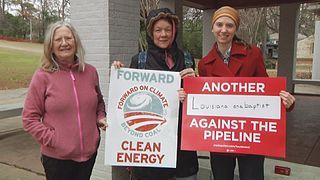From Guest Blogger Jessica Max: Green Energy – The Future Energy Solution

Green energy is defined as energy producing sources that are renewable. Things like the light from the sun, wind, water and even geothermal energy are considered to be self-renewing and have a minimum impact on the planet and the emission of greenhouse gasses. Solar, wind, hydro and geothermal energy sources are things that we are not likely to ever run out of, whereas, fossil fuels such as oil and coal, for example are finite resources. These finite energy choices come with emissions of greenhouse gasses and other pollutants that are inevitably warming the surface of the earth to levels that are considered dangerous.
Before the cost of greener energy were far more costly than conventional fossil fuel choices. Solar panels, wind turbines sized for a private residence, and even geothermal heating and cooling were more expensive in the past than they are today. Because of growing public concern, and a recent fall in prices of installing these devices, all of these forms of alternative or green energy are gaining acceptance and being adapted by more consumers, communities, and companies across the United States.
Corporations are currently making constructing buildings and manufacturing facilities that are designed to make the most of green energy choices and become more self-sufficient by larger and larger percentages than in the past. Every major auto manufacturer around the world is currently offering or will be offering electric cars or vehicles that are fueled by renewable resources. Governments are pushing to have infrastructure put into place to meet the upcoming demand. It won’t be long before green energy or renewables will be the norm rather than the exception.
Green energy sources can include:
Solar Energy: Utilizing energy which comes from the sun by use of solar panels.
Wind Energy which uses the wind to power turbines and generate electricity.
Hydro Electric Power: Water power has been used for centuries on either a small scale such as a water powered mill, or a larger scale such as Hoover Dam.
Biomass: These are provided from plants and the manure of animals. These are constantly being generated and are considered renewable.
Geothermal – coming from the earth and the heat that is naturally generated by the heat at the center of the earth. Many homes already have geothermal heating and cooling systems to take advantage of this free resource.
Hydrogen – a natural occurring element that we are unlikely to ever run out of.
What are some of the advantages of green energy?
- Green energy comes from things we will not run out of in the foreseeable future where fossil fuels are becoming scarcer and more expensive.
- Green energy choices are far less detrimental to the environment and to the health of humans, plants, animals and the rest of the planet.
- Once infrastructures are put into place, green energy is far less expensive to use and to maintain than other forms of energy currently in use such as coal, oil and other fossil fuels.
Are there any disadvantages of using green energy?
- The largest disadvantage of green energy has been one of cost. The price is coming down with more affordable solar panels, home wind turbines and geothermal heating units and more professionals who are able to install them.
- Some corporations, municipalities and other government bodies regard green energy as a threat to their livelihood. Those who are threatened have used laws and legislation to try and slow down the public’s push and adaptation of green energy choices. Some cities make it illegal for homeowners, for example, to be off the electricity grid citing concerns over safety.
- Utility companies may not yet have proper infrastructure in place in their power grids to handle more consumers going toward green energy. Some utility providers just simply have not currently allocated the funds or pushed for conversion from fossil fuels toward green energy.
- Some biofuels such as ethanol made from corn, sugar cane and other plant materials, for example, are being questioned as to just how green they truly are. The amount of water required to create a gallon of ethanol is significant. With water being our planet’s most precious and finite resource, these concerns are not unfounded. Some feel that there is little proof that biofuels are any cleaner than other forms of energy.
While recent challenges to the economy shoved large-scale projects to create more green energy aside for a period of time, these are slowly being re-examined and slowly brought back into focus. This is largely because of increased demand by the public toward renewable energy choices.
Around the world, green energy has gained a place in the minds of people because it offers a way for even developing countries to become energy independent and spend less of their monetary resources on providing adequate power to the people at a more affordable cost in a way that is better for people and ultimately better for the health of the planet.
Article is written by Jessica Max, Jessica works at Emergency Lights located in Hollywood, CA.
